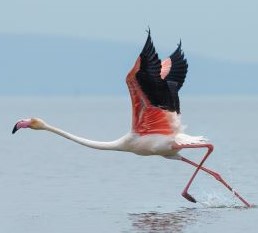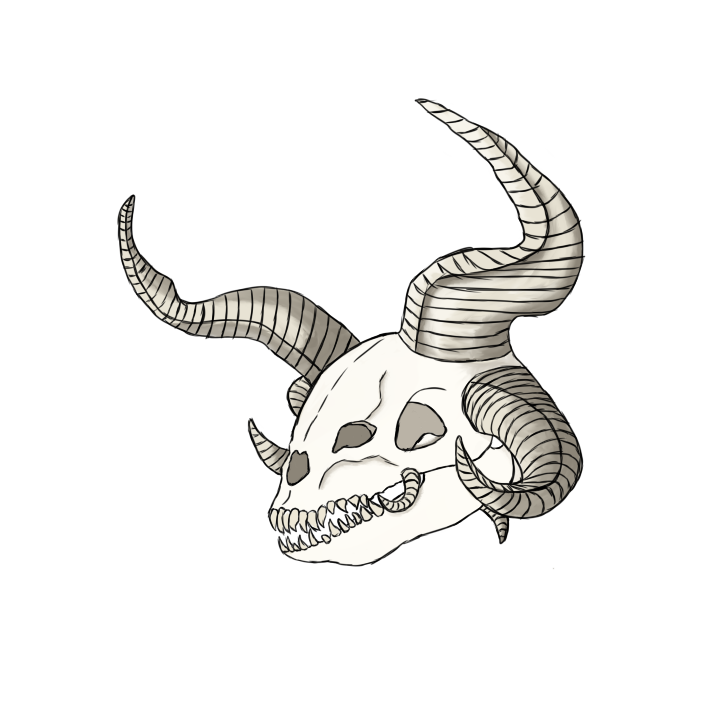Nabastis
They have feline faces, with short pointy ears at the side of their heads. Their upper body down to the hips is covered in fur, and from the hips down to the base of their hooves, in scales.
Their anatomy has allowed them to adapt to almost any environment, and their curious nature has pushed them to explore as far as they can go.
Basic Information
Anatomy
Until they grow their scales their legs have soft leathery skin, so the down fur is much thicker in this area.
Scales are small and develop at around 8/10 years. Nutrition at this stage is important, children are quite ravenous, and they need to eat well, as with kids being kids, they tend to damage their scales quite often and their body needs energy to replace them properly.
Throughout their life, nabastis need to be careful with their scales. Even though they heal much faster than injuries in their upper body, if the root of the scale is damaged, the body can't regrow it, and the skin will harden as protection creating what is called "hard skin".
Cleanliness is important for the scales, especially as they shed them.
Hair
Their body fur is coarser than the hair in their heads. Body fur during their childhood and adult life grows at a slower pace than that in their head and face.Adolescent nabastis (between 13/35 years) experience the first of two growth spurts which causes both their hair and fur to grow much faster than usual. If left alone it can become bothersome as it knots easily.
Tail
They have short bony tails, ranging between 6 to 10cm long, covered in a thick coat of hair, usually the same colour as the hair in their heads.In some societies, tails are as much part of a regular outfit as any other item. Some even dye it or attach ornaments to it (bone beads are popular, as they also serve as hair treatment). Its length is also a matter of preference and culture.
There are warrior-prone societies who keep their tales the shortest possible, and others keep theirs long as a way to signify their fighting prowess.
Hooves
Nabastis hatch with solid hooves. They provide stability during their first two stages. Since their adolescence, and depending on the type of life they lead, their body will shed away layers of them until they become cloven hooves.Firebreathing Nabastis
The Sleeping Sea had consequences for the nabastis.All around the continent, randomly, some nabastis began to hatch with the ability to breathe fire. The randomness of it made it left people confused.
As hatchlings, they are prone to having fevers and tend to be very messy. The gland which produces the fire is constantly overflowing while they learn to control it, and can make them have reflux and firepuking. Which as terrible as it sounds, is not fire just the regurgitated orangey liquid, although it is quite flammable.
As with any other talent, it needs to be trained to produce a flame of any substance, and those who manage to do it with finesse are greatly sought after. Fire-breathing nabastis usually work as artisans, artists and blacksmiths.
These nabastis usually have a shorter life expectancy than non-firebreathers because they tend to suffer from heartburn and fevers, and are prone to contract boiling blood (the latter if they aren't careful with their gift).
Some firebreathers move to colder areas as it helps them breathe better.
Did you know?
A common mistaken belief is that a carrier who experiences heartburn during pregnancy might be carrying a fire-breathing clutch.In the northern regions, eating spicy food while pregnant is considered an offering to get a fire-breathing clutch. Others said the babies might be encouraged to become fire-breathing to withstand it.
Genetics and Reproduction
Sexual maturity manifests for both organs at the same time, around 30/35 years old with the “fake laying”; and the expelling of the outer frenum, which holds their penis in their case, followed a few days later by ovulation.
Fake laying is when their bodies produce a batch of empty eggs filled with a viscous gunk which, when pregnant, is secreted by the womb to protect the fertilised eggs. A few days after the fake laying they will ovulate, and will continue to do so once a year until they are 100/120.
Even pregnant, nabastis can expel empty eggs. Sometimes the body makes an egg around nothing. Depending on their position these empty eggs might be expelled or crushed as the fertilized eggs get bigger.
Did You Know?
Around the year 1753 BSS, a nabasti from Baihef discovered a potion that triggered ovulation, this caused a large increase in the birth rate on the east coast, and later the rest of the continent as merchants spread the potion. Abusing it can cause a higher number of empty eggs and fewer nabastis per clutch.In some places, people believed the number of eggs laid during the fake laying was a prediction of how many children or clutches (it varies from group to group) could an individual produce. In some cultures, this can lead to social rejection, banishment, or even death.
Pregnancy
A successful pregnancy can be identified around the end of the first month by the squishy bloatedness of the carrier's belly due to the womb's viscous secretion.
Nabastis need to be very careful with their skin during gestation. The half of their bellies covered in scales shed much faster during gestation, making the skin very tender and prone to getting infected.
The number of eggs per clutch is usually proportional to the size of the carrier and their nutrition before and during the pregnancy.
The eggs have a thick soft leathery shell full of nutrients. As the fetus triples its size the shell becomes thinner and more elastic.
When they are in the eggs, the hooves have "hoof fingers", a series of soft growths which prevent them from accidentally tearing apart the shell before the right time. The fall off a few days after hatching.
Did You Know?
Nabastis from the Armovian mountains celebrates the laying by painting the eggs with a mix of ashes and herbs to make the shells stronger. This is repeated every month in a ceremony. When the hatchling is ready the parents carefully cut out the shells and boil them in rock milk to harden them and cut intricate patterns to use as hats when presenting the hatchlings.In the region surrounding the Yarinixia desert, they have a similar tradition, but instead of using them as clothes, they boil them in gaxara butter and hang them to make them even thinner. After the week of recovery, when the hatchlings are presented to the family, the carriers of the family use the shells to cook xatchies to gift the carrier.
Growth Rate & Stages
1°Stage: 8/10 years - Hatchling
Fresh out of their eggs and covered in down fur. They are at their most curious. They take a few hours to be able to walk and get tired easily at first.Some firebreathers are suspected at this time, but it isn't until they make their first flame that they will have confirmation.
2°Stage: 8/10 years to 13/15 - Childhood
Begins with the shedding of the down fur, as their regular less flighty fur grows. The scales have fully developed, although they might still be a bit soft in the first few months. They begin to shed like adults.Firebreathing nabastis can begin learning exercises with their flames to improve their control of them.
3°Stage: 13/15years to 30/35 years - Adolescent
They experience their first growth spur. Their fur and hair grow faster.They can become quite moody as they reach their final growth.
4°Stage: 30/35 years - onwards - Adulthood
Begins with their sexual maturity.Their fur and hair go back to their regular growth speed.
Elderly nabastis lose the ability to grow beards and moustaches.
Scale shedding also can become a problem. The scales become less flexible and the legs stiffen. Many old nabastis opt to have their scales removed and have hard skin. Others employ brushes to help the scales shed and rub them with several creams and poultices to soften them.
Did you know?
In the coastal cities of Sanrovia, teenagers grow impressive beards that they decorate with all kinds of accessories. In other places, teens carefully grow their upper fur to be long enough to cover half their legs and decorate it with coloured beads.Others choose to shave off their excess fur, especially those in permanent contact with water, as having constant wet hair might cause diseases.











Really interesting article! I particularly liked the section on reproduction - the idea that some choose to go into isolation because of the extra shedding and risk of skin infections is really interesting. Love the bit about gender as well, and the nice table with pronouns! :D
Thank you so much for your words <3
The bit about shedding gave me some ideas about using that to create a difference between people with different incomes.